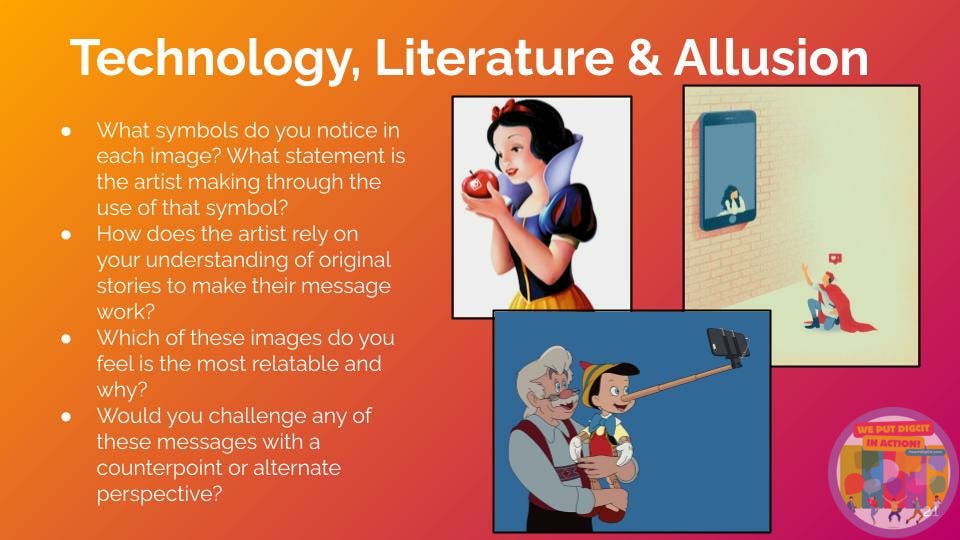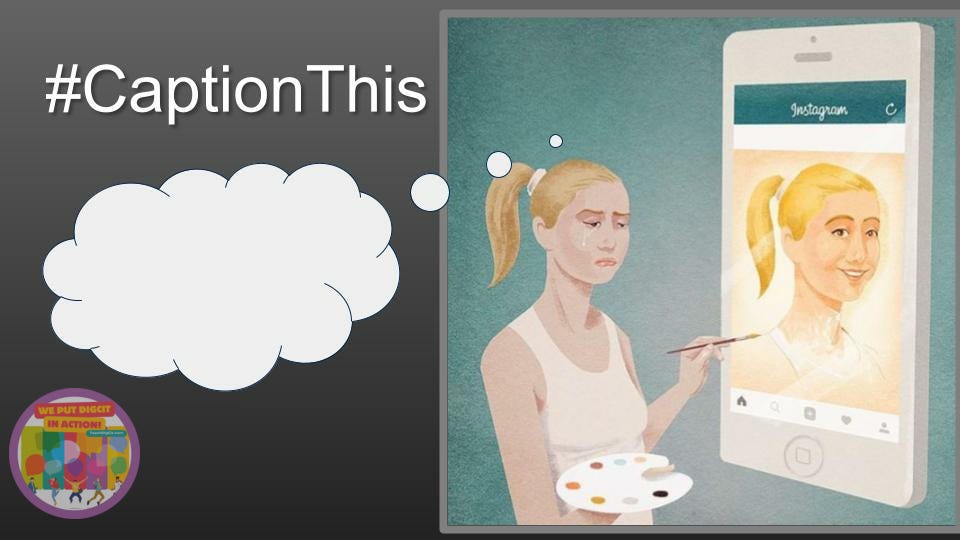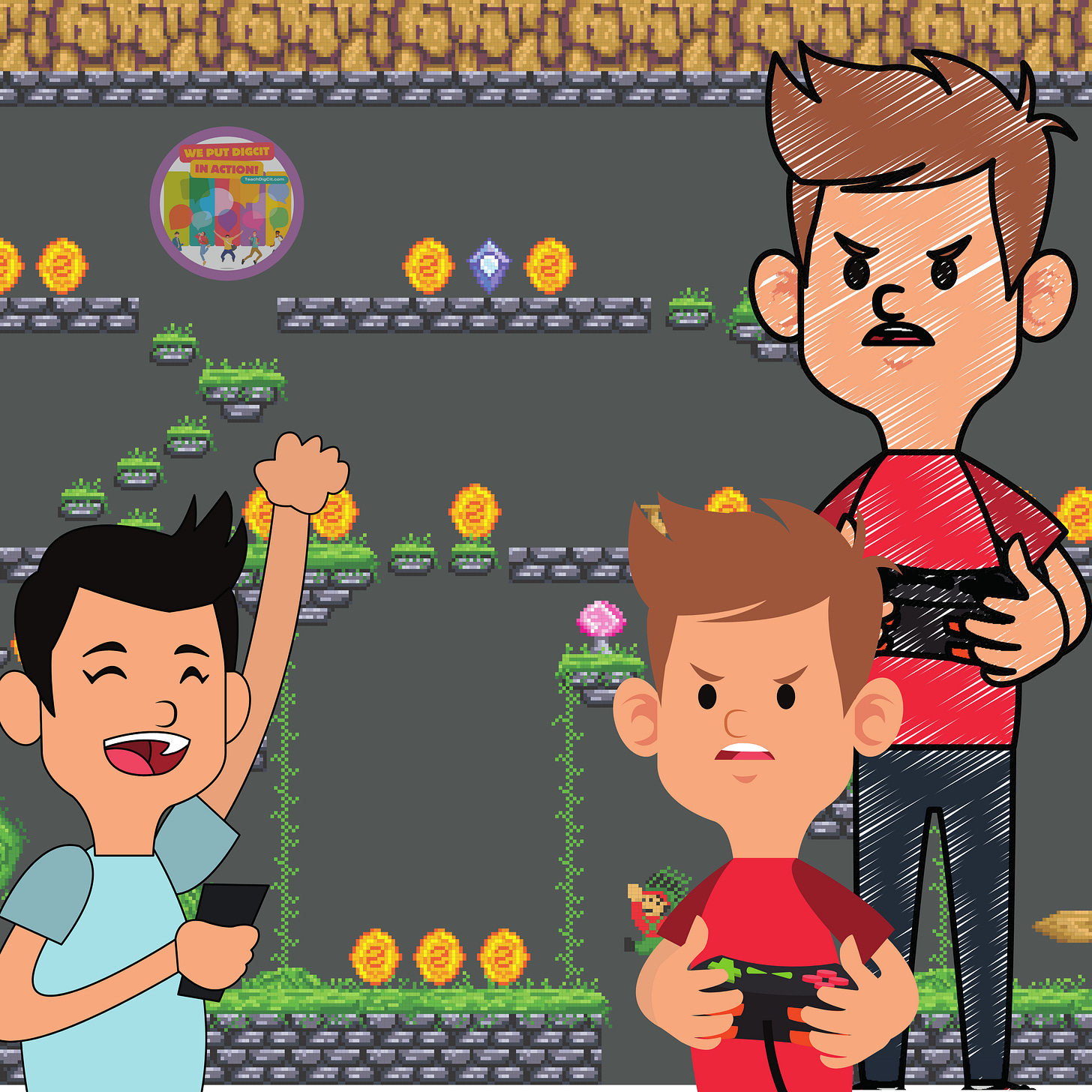Using Images to Teach Digital Citizenship
Need new ways to get your students talking about the digital world? Try using art!
“We need thoughtful, empathetic digital citizens who can wrestle with the important ethical questions at the intersection of technology and humanity” (Mattson, 2024).
But how do we create empathetic digital citizens? And how can we get them engaged in multi-perspectival thinking? First, we have to put down our “one-size-fits-all” digital citizenship lessons in favor of activities that allow for nuance.
Why Images?
Using art for digital citizenship discussions benefits students and teachers alike.
Teachers can mix and match images and activities to make activities that tie digital citizenship concepts into so many different content areas and learning goals.
Using images takes the pressure off of the teacher to have “all the right answers” about life in a digital age. Instead, we become the facilitators of great dialogue.
Students who may feel uncomfortable talking about their own experiences in online spaces can open up about what they see in the art instead.
Images, like all types of art, are open to interpretation. There is no singular right answer when it comes to analyzing art, so we can encourage students to ‘live in the gray’ and consider many different perspectives.


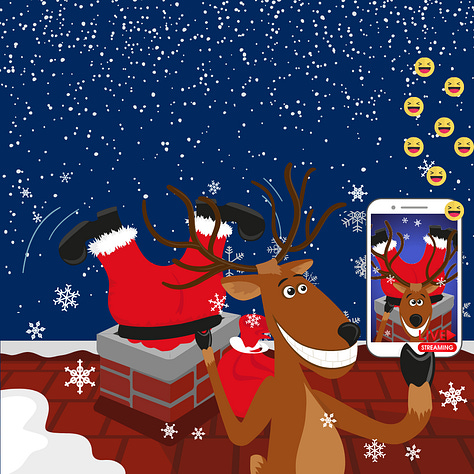

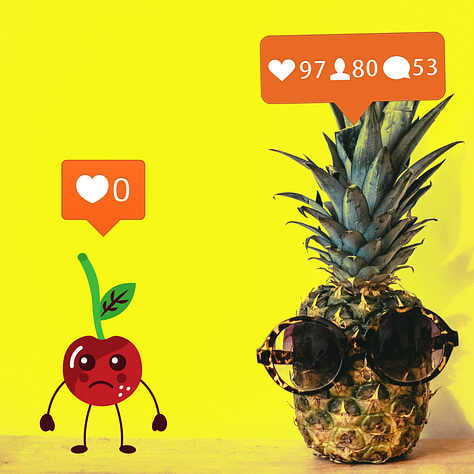

Using Images as Bellringers
I love using images for bellringers - short little activities that take just 3-4 minutes at the start or the end of a class. These bellringers could be as simple as a “caption this” submitted through a Google Form, a “Would you rather” questions posed as a turn and talk, or an image paired with a few thoughtful questions to get students journaling.
Use Images to Work on Writing Goals
Give your students summarization practice by having them write titles and captions for images you provide.
Use images as inspiration for creative writing activities: poetry, short stories, character descriptions, and more.
Show students the “cover of a new book” you just received in your classroom. Have them complete a plot diagram or a back of the book summary based on the image you provide.
Help students practice punctuating dialogue by writing a conversation that takes place between two people in a single image.
Practice perspective taking by having students write descriptions of what is going through each characters’ mind in a given image.
Encourage Conversation
Students are typically eager to share their opinions and experiences on digital-aged topics, but often need structured activities or protocols to get the conversations started with their peers.
Sorting Activity
Choose 15-20 images on a similar topic, print them out, and put them in a bag for student groups to manipulate. Here is an example of an AI-themed sort I made.
Provide students with the following directions:
Lay out your cards on the table picture side up.
As a team, sort the cards into categories of your own choosing.
Assign each group a category name or label.
Are there other ways you can categorize and label your cards?
In this sorting activity, the goal is not to have a specific answer or even number of groups. The discussion that happens as students try to create the groupings is the valuable part.
Gallery Walk
Choose 8-10 images on a similar topic, print them, and hang them around the classroom.
Pair students up to travel around the gallery answering the following questions together:
What message is the artist trying to deliver?
Do I agree or disagree with this message? Why might someone feel differently from me?
What connections can I make to this message?
Once the pair has traveled the gallery and had an opportunity to discuss, students can return to their seats to write an individual reflection on the gallery experience.
Finding Images for Use in the Classroom
You are in luck! I have been curating images from around the internet for awhile now and this Pinterest board has over 900 of them on a variety of topics and for a variety of age groups.
I have also had a lot of fun making images of my own using Canva, and encouraging students to do the same.



